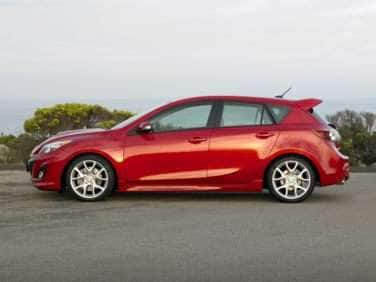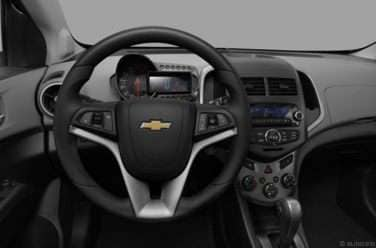Recent Articles
Popular Makes
Body Types
What is Vehicle Stability Control?

Vehicle stability control is a technology designed to arrest skids. The intention is to enable a driver to maintain control of a vehicle during sudden and/or abrupt changes of direction. The goal is to keep the vehicle traveling on the path intended by the driver.
Different manufacturers refer to the technology by a number of different names; electronic stability control or “ESC”, AdvanceTrac, Electronic Stability Program or “ESP”, StabiliTrac, Vehicle Dynamics Control or “VDC”, and Vehicle Stability Assist are a few of the designations employed.
Designed to prevent the conditions known as understeer and oversteer, the technology was developed by the Robert Bosch Corporation. Vehicle stability control is generally agreed to have been initially employed in Mercedes-Benz and BMW models.
Vehicle Stability Control: Understeer Vs. Oversteer
Understeer happens when a driver turns the steering wheel of a vehicle and gets less response than requested. In other words, understeer is what happens when the driver turns the steering wheel, but the car continues to travel primarily in the direction the driver is trying to change. In extreme understeer cases, the driver turns the steering wheel but the car slides straight ahead.
Oversteer is exactly the opposite; the driver turns the steering wheel a little and the vehicle changes direction a lot. This generally happens because the rear wheels lose traction and a skid ensues, placing the auto in a situation in which it begins to spin.
Vehicle stability control sensors designed to read steering input, wheel speed, and the attitude of the car, communicate with a central computer to measure the driver’s intentions against the response of the car. The central computer then dispatches instructions to the braking system and the engine control unit to help control the car.

Vehicle Stability Control: Sensors
A sensor mounted at the center of the car, called a “yaw” sensor, measures the movement of the car about its central axis. It can tell if the car is moving forward, backwards, or sideways in any direction.
Wheel speed sensors are employed to measure the speed of each wheel against its three counterparts. Typically a skid happens when one wheel begins to turn more rapidly than the others. The location of that wheel will also generally determine the direction of the skid. If the front wheels start spinning faster, the car understeers, if the right or left rear wheel starts spinning faster, the car starts to oversteer (spin) toward the right or left.
The steering angle sensor is employed to determine the driver’s intention. It measures the direction the steering wheel is turned, how fast it’s turned, and how far it’s turned to communicate the driver’s intended path of travel to the central computer.

Vehicle Stability Control : Physical Components
If any single invention can be credited with enabling the development of vehicle stability control systems it is the anti-lock braking system – also developed by Bosch. Anti-lock brakes predicated the installation of wheel speed sensors in cars.
The other invention making stability control possible was traction control. This system is capable of reducing the power output to the drive wheels of a vehicle to ensure it moves steadily on a slippery surface. ABS and traction control are key to the operation of vehicle stability control.
In the case of ABS, a vehicle stability control system can use each individual brake to slow a given wheel if it is determined to be spinning faster than the other three, thus keeping the vehicle on its intended path. If braking a wheel isn’t enough, the stability control system can then call upon the traction control system to also reduce power output.

Vehicle Stability Control – How It Works
OK, let’s say your car is not equipped with vehicle stability control. It’s a rainy day, you’re traveling on the highway and suddenly you see a lawn chair on the road in front of you. You crank the steering wheel hard to the right to avoid the chair. The sudden attempt to change direction eliminates the traction your front wheels were enjoying so rather than turning, your car is now sliding — toward the chair.
If you had vehicle stability control, when you cranked the wheel hard to the right, the sensors in the steering wheel would have communicated your request for a sudden change of direction to the central computer. The wheel speed sensors in the front wheels would have communicated the loss of traction and the yaw sensor would have informed the computer the car didn’t change direction.
The central computer would then have activated the ABS system to try to slow the rotation of the front wheels so they could regain traction and enable the car to move in the direction the steering wheel was turned. If it was determined this was not enough, the computer would then have reduced power to the drive wheels to slow the car as well — all in an effort to help the front wheels regain traction and move the car away from the lawn chair.
Alternatively, let’s say you’re traveling on a winding mountain road and you go into a curve a bit too fast. The rear end of your car starts to slide, threatening to spin you out of the curve. The system sends a message to the left rear wheel to brake, arresting the slide, and you continue around the curve as if nothing happened.

Vehicle Stability Control – Safety Considerations
It is important to note, vehicle stability control is not capable of repealing the laws of physics. While the system can help a driver maintain control in most situations, excessive speed can overwhelm the system and contribute to an accident.
In other words, one should not rely upon vehicle stability control to rescue them in any given situation. Stability control does not make a car handle better, nor does it make a driver perform better. It merely assists the driver by helping minimize the consequences of a loss of control situation.
